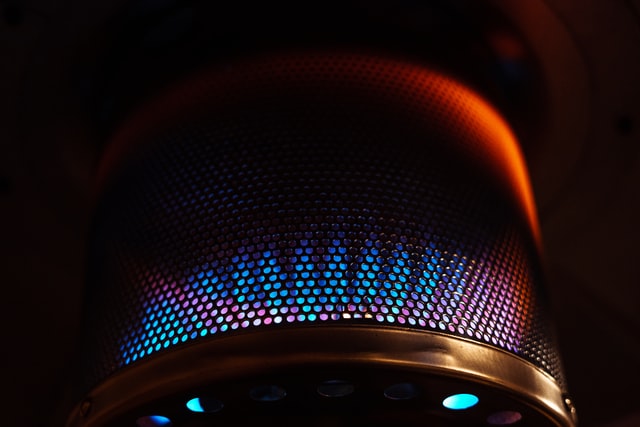Cleaning out one’s wax pot is a chore no one enjoys. True, we enjoy putting new wax in the warmer and having a clean one, but cleaning can be a messy aspect of doing what we do. That’s why we’ll show you how to clean your wax pot quickly and easily so you can concentrate on the more enjoyable aspects of waxing. We’ll show you how to clean out a wax warmer in a few easy steps that will save you time and frustration. We’ll show you everything you need to know about wax pot cleaning, from how to remove wax from a wax warmer to temperature settings and how to choose the best wax pot cleaner.
- When cleaning, keep the heater on low heat
The first step in cleaning a wax warmer is to remove any residual wax after the day’s last session. Waiting for the wax to cool isn’t the ideal cleaning approach because it’ll be difficult to remove the wax from the pot at room temperature. Allow the wax to melt until it turns liquid when you’ve finished your last treatment of the day, then turn the device off and go to the next stage.
- Keep only what you can
If there is a lot of wax on the pot, pour it into a fresh container while it is still hot and utilize it later (you can recycle the wax if you 1. Keep it in a container that has been adequately sterilized. 2. are quite certain that no maybe double other type of contamination took place).
- Apply wax strips to the surface to clean it.
You can use a paper or cloth wax strip to remove the remaining wax after removing what’s left of the beneficial wax. Cotton pads should not be used because they are prone to breaking and sticking to the paste, resulting in a mess.
- Put the waxing pot in the dishwasher to sterilize it.
To eliminate bacteria and disinfect your products, sterilize the non-disposable equipment you use, such as tweezers, metallic spatulas, and the aluminum pots into which you pour wax to melt it on the wax heater. Getting professional salon sterilizing equipment at reasonable prices can be challenging if you work on your own or don’t have a large, professional salon budget. UV towel warmer sterilizers, sterilizing sprays, and boiling water can all be used to kill germs.
- Coat the wax warmers with oils
Mineral oil and a towel can be used to clean any drips or stains from the wax warmer. However, as this article points out, using solvents or acidic cleansers on the warmer’s plastic parts can harm the material, resulting in cracks or premature deterioration.
- Use paper collars to protect your furniture from damage in the future
Cleaning the Inside of the Pot
- Increase the thermostat in your household to a higher setting than usual
Turn your pot to medium-high if you’re using wax that melts at a medium temperature. Before you can clean out the internal pot, the wax has to melt completely. The only part of most wax pots that needs to be cleaned on a regular basis is the inner pot.
- Continue to heat until the wax has completely melted
Check for bubbles or thin-running wax while your wax heats up. Stir it with a brush, a mixing stick, or a spoon to remove any solid wax lumps. Mixing and heating your wax should be done with caution. Once the wax is completely melted, turn off the heat.
- With the handle, oven mitts, or tongs, remove the inner pot safely
To avoid getting burned, use a thick oven mitt that braces the bottom. Only a normal wax pot with a replaceable inner pot will work with this procedure. If you’re using a one-piece pot, skip the steps about removing it and instead tilt the entire unit to pour it out.
- Remove the wax by pouring it into a disposable container
Due to the fact that you cannot flush melted wax down the toilet, you should pour it into a temporary thin plastic container. In case of a spill, place a large towel beneath the container. To pour out your wax, put on oven mitts and flip the container over. Pouring wax down the drain is not a good idea. When large volumes of wax dry in the pipes, they will become clogged.Pouring hot wax into a porous or soft plastic that can spill is not a good idea.
- Wait for the inner pot to cool before moving it
Place the container in a safe location and let it cool for 1-3 hours. Heat isn’t a problem for granite, glass, or thick cloths.
- To remove any leftover wax, use a rubber scraper or spatula
If you want your hands to stay clean, put on a pair of rubber gloves. Scrape the interior of the inner pot with a rubber scraper or spatula to remove any leftover wax. Allow the scraped-out pieces to settle at the bottom of the saucepan before discarding them.
- Wipe down your pot with mineral oil or wax cleaner
Some wax pots have a cleaning solution designed to get rid of wax residue from the inner pot. Using a paper towel, thoroughly wipe some oil or cleanser into every surface of your pot. On an inner pot with plastic pieces, avoid using an acidic cleanser. The cleanser may cause the pot to break or get damaged.
- Using a sanitizing wipe or a sterilizing solution, clean the inside of the pot
Wipe the interior of your pot down with a disinfecting wipe or a sterilizing solution. This isn’t required, but it will help prevent wax stains in your pot. Before reusing your pot, allow it to air dry for 3-4 hours.
